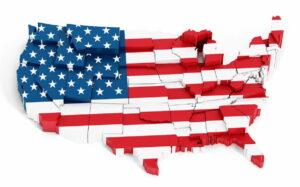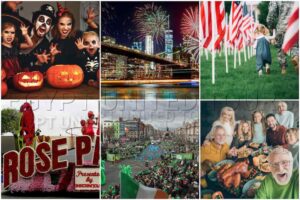National Holidays
Learn about the historical events, cultural practices, and religious beliefs that have shaped national holidays around the world. From the signing of the Declaration of Independence on July 4th in the United States to the ancient Persian New Year celebrations of Nowruz, expand your knowledge of global cultural traditions and their significance.


National Holidays Around the World: Celebrating History, Culture, and Identity
National holidays are integral to every country's cultural fabric, representing a time for celebration, reflection, and remembrance. These special days commemorate significant historical events, honor national heroes, or symbolize important aspects of a nation's identity. This guide will explore some of the most interesting and meaningful national holidays worldwide, examining their origins, traditions, and significance.

1- Independence Day (United States) - July 4th
Independence Day, also known as the Fourth of July, marks the adoption of the Declaration of Independence in 1776, which declared America's independence from British rule. The day is celebrated with parades, fireworks, barbecues, and patriotic music. It symbolizes the birth of American democracy and the values of freedom and self-determination that define the nation.
2- Bastille Day (France) - July 14th
Bastille Day, also known as La Fête Nationale, commemorates the storming of the Bastille prison in Paris during the French Revolution in 1789. This event marked the beginning of the end of absolute monarchy and paved the way for modern France. The day is celebrated with military parades, fireworks, and parties nationwide.
3- Australia Day (Australia) - January 26th
Australia Day honors the arrival of the First Fleet at Sydney Cove in 1788, marking the beginning of European settlement in Australia. The day celebrates Australian culture, history, and achievements, including parades, barbecues, and citizenship ceremonies. It represents the diverse and multicultural society that defines contemporary Australia.
4- Chinese New Year (China) - Dates vary according to lunar calendar
Chinese New Year, or Spring Festival, is one of China's most important traditional holidays. It marks the beginning of the new year on the lunar calendar and is celebrated over two weeks with family gatherings, dragon dances, firecrackers, and delicious food. The festival embodies centuries-old customs and beliefs, reflecting the rich cultural heritage of China.
5- Diwali (India) - Dates vary according to the Hindu calendar
Diwali, the Hindu festival of lights, signifies the triumph of light over darkness and good over evil. It celebrates Lord Rama's victory over Ravana and the goddess Lakshmi's blessings for prosperity and wealth. Indians observe the festival by decorating homes with diyas (small clay lamps), exchanging gifts, and sharing sweets with loved ones.
6- Carnaval (Rio de Janeiro, Brazil) - February/March
Carnival in Rio de Janeiro is one of the world's largest and most vibrant festivals. It takes place before Lent, fasting, and repentance preceding Easter. Brazilians celebrate Carnaval with colourful costumes, samba dancing, and street parties, showcasing the country's African, Portuguese, and indigenous influences.
7- Nowruz (Persian New Year) - March 20th/21st
Nowruz, known as Persian New Year, has been celebrated for over 3,000 years. It marks the beginning of spring and the start of the solar year. People across Iran, Afghanistan, Tajikistan, and other countries welcome the new year with family gatherings, traditional foods, and rituals such as setting a Haft-Seen table, symbolizing renewal and growth.
8- Modern Canadian Flag (Canada) - July 1st
Canada Day celebrates the anniversary of the enactment of the British North America Act on July 1, 1867, which united three British colonies and formed the modern state of Canada. Parades, fireworks, and other patriotic events nationwide mark the day.
9- Loi Krathong (Thailand) - November full moon night
Loi Krathong, translated as "floating crown," is a Thai festival where people create krathongs, small boats made from banana leaves, flowers, and candles, and release them into rivers and waterways. The festival honours the goddess of water and asks for forgiveness for past mistakes. It represents the harmony between nature and human life in Thai culture.
Day of the Dead (Mexico) - November 1st/2nd
The Day of the Dead, or Día de Muertos, is a Mexican holiday that reunites families with their deceased ancestors and loved ones. Families build altars with offerings, photographs, and favourite items of the departed and celebrate with traditional foods, music, and dance. It honours the cycle of life and death and the importance of remembering those who came before us.
Conclusion:
In conclusion, these ten national holidays represent just a few examples of the diverse and fascinating ways countries celebrate their histories, cultures, and identities. They unite people, fostering a sense of belonging and shared purpose while highlighting the unique stories and traditions that shape each nation's character. By exploring and learning about these holidays, we gain a deeper appreciation for the rich tapestry of global cultures and the common human experiences that unite us all.



